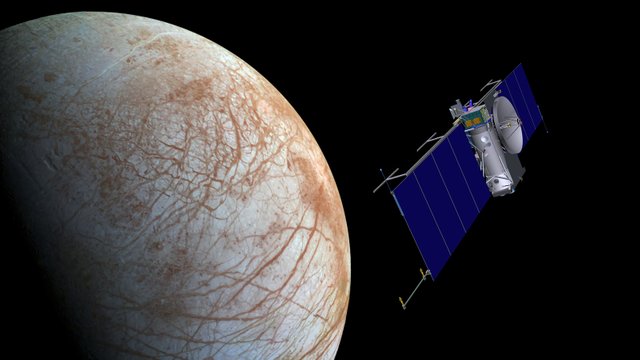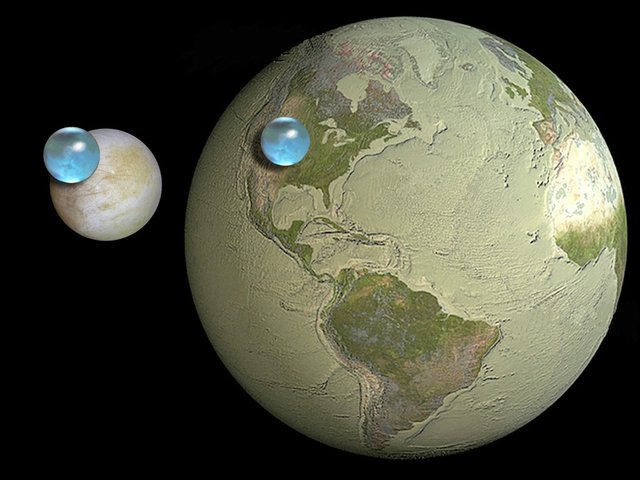A few words about the search for life in the Solar System

Surely, each of you has wondered more than once in your life about the possibility of the existence of extraterrestrial organisms. While thinking about this, the majority of people probably imagined that these organisms inhabit a distant planet, which at the moment is not reachable by our civilisation. As it turns out, the extraterrestrial life may be located just under our nose, because under the surface of the icy moon of Jupiter, Europa. Moreover, this remarkable heavenly body will soon be studied for the presence of living organisms, and then we should receive an exact answer to the question of not "Are we ourselves in the Universe", but "Are we alone in the Solar System?
Let us start with a few basic facts about this seemingly unfriendly world. Europa was discovered by the wonderful astronomer, Galileo, without doubt. According to historical sources, the exact date of this discovery is January 7, 1610. The discovery is even more impressive when we take into account the fact that Galileo used ordinary binoculars made by himself during the observation. We now know that Europa's surface is ice-soaked and crossed by various types of cracks and irregularities. The cracks visible in the pictures took a dark color probably due to the presence of salt and hydrated sulphuric acid. Surface seems to be quite interesting and diversified, but it is not what we are interested in and does not allow researchers to sleep. A place that requires detailed exploration and research is the ocean beneath the surface of this ice moon. Europa is far beyond the sun's friendly living zone, but because of the tidal forces created by the extremely strong gravity of Jupiter, which literally stretches Europa in all directions and thus warms its interior, it is possible to have an subsurface ocean of water. It is believed that hydrothermal chimneys may occur on its bottom, which further increases the likelihood of finding any forms of life in it. That is why scientists are so interested in exploring this place.

Therefore, NASA has designed and is currently preparing a mission called Europa Clipper, which will have many interesting instruments on board. The Europa Clipper probe will reach the ice moon orbit with several major tasks. These include detailed analysis and photographing of Europa's surface, chemical analysis of the atmosphere, and the final confirmation of the sub-surface ocean that will be examined by the probe for its conditions. Europa Clipper should provide researchers with sufficient information to enable them to determine whether life can occur in it. In addition, the probe will look for a suitably smooth and interesting terrain on which the NASA-designed lander will land in the future.
There is no doubt that the attention of scientists will be focused on geysers on the surface of Europa. They can be a window to the world hidden deep under the ice crust of the ecosystem. The water thrown into space by geysers may contain substances that are the product of living organisms. Such a discovery would be a groundbreaking event in the history of mankind and would probably change the way many people perceive the exploration of space. It would also prove that life is something common. You can compare it to water. Not so long ago we were wondering whether somewhere outside of our planet it is present. We now know that the Solar System itself contains a huge amount of water. Let us hope that it will be the same with life.

Initially, it was planned that the Europa Clipper would be equipped with a small lander, but the idea was abandoned. Probably for financial or technical reasons. We should therefore expect such a mission several years after Europa Clipper, which should be launched around 2022. The probe will be lifted into space on board the Space Launch System, whose debut is regularly delayed. Let no one be surprised if this leads to a few years of postponement of the mission's launch.
Europa is one of the best candidates to look for life outside our planet It is also worth to remember, that it is not the only one that hides under its surface an ocean of liquid water. Enceladus, Ganymede and very possible that Ceres and Pluto also have huge deposits of life-giving substance. I believe that the first extraterrestrial life will be discovered not on the planet, hundreds of light years away, but in our Solar System.

Well finding extra terrestrial life is quite difficult but we can hope for the best !!!